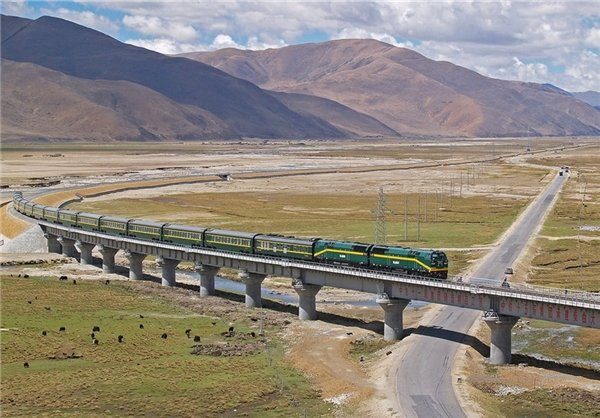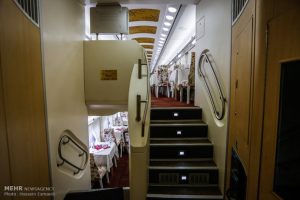“The Trans-Iranian Rail Tour”
Private Iran Rail Tours
Imagine, traveling in spacious comfort to world famous historic sites, resting at ease in a comfortable train coach as the miles slip past.

Iran Railway Pass
Imagine, viewing all the spectacular scenery from your large coach-car windows… seeing this ancient land for yourself as your train glides through the Iranian countryside.
Experience resplendent desert sunsets, and watch each memorable landscape recede into the distance as your car glides along the rails.
This 14-day tour is designed for rail enthusiasts who are looking for first-class rail travel combined with the opportunity to see the most important historical sites of Iran. The tour incorporates both rail and road travel in an ambiance of full luxury.

Differing from some similar rail tours of Iran, this itinerary will include as much daytime rail travel as possible. This can be a tricky business because of the nature of Iranian train schedules. This is because not every train runs every day.

During any overnight travels, you will have your own private compartment on a modern Iranian train. Plus your personal guide will accompany you throughout your entire trip.
This tour begins and ends in Tehran. You’ll get to see a beautiful country — Iran is an ancient civilization, home to no fewer than 16 UNESCO World Heritage sites.
You can travel to Iran and take this tour whenever you decide to go. Even if you are a solo traveler you will find that the tour is less expensive than many large-group tours of Iran.
This tour, the first and only one to follow this route into some of the most scenic mountainous parts of Iran, can be taken at any time of year. The tour covers a lot of ground and you will be guaranteed to see many fascinating places. Of the three rail tours we offer this one has the most rail travel.
We have made every effort to have you on the train in daylight hours during the most scenic parts of the itinerary. But if you are spending the night on a train you will have a very nice private compartment. Of course, not every part of the trip can be covered by rail. But we have included as much as possible and scheduled the itinerary in such a way that you will get in lots and lots of rail miles.
Pricing
- 1 person $6095
- 2 people $4695 per person
- 3-5 people $3995 per person
- 6-10 people $3495 per person
- All Prices Have Been Sharply Reduced due to Downward Movement of Iranian Currency. Call Us for Current Prices!
- IMPORTANT UPDATE: Because of the sharp slide in recent months in the value of the Iranian currency, the Rial, the prices of our tours have dropped accordingly. Please check with us about our new lower prices for all our Iran tours.
Please note: These prices are for a completely PRIVATE tour. You would NOT be part of a larger group. The prices listed above may be subject to small fluctuations due to Euro exchange rate changes. The prices above are based on shared hotel rooms and train compartments for at least two people. The single supplement for two or more people traveling together but in private accommodations is $995 per person.
….
“Journey into the Heart of the Persian Empire with all the Comforts of Iran’s Modern Trains”
Leave Any Time – All Train Tours Are Private
Interested? Call us today at 1-919-726-2044 or contact us here for a free travel Q&A session
….

The map above shows some of the destinations and rail stretches covered by this tour. Every effort has been made to include as much daylight travel as possible so that you can take in the amazing landscape of Iran.
Please note: There will be some days when we will be traveling to our destinations by private vehicle. This is dictated by the Iranian train schedule. Plus there are several stops on the way that could not be seen if all travel were by train.
Day 1
Tehran

Landing in Tehran
Arrive in Tehran (IKA Airport ). Most flights from the US arrive late at night or early in the morning. After passing through customs and claiming your baggage, you’ll see your guide, holding a sign with your name on it, waiting for you outside the baggage area.
He or she will be your guide for the whole trip. Your driver will be waiting for you outside. Your hotel is around 40 minutes away. Get a good night’s sleep at the 5-star Espinas Hotel.
Your program for the rest of day will depend on what time your flight arrives. You may just want to rest up. Or you may want to be taken to see some of the attractions that Tehran has to offer.
Overnight in Tehran at 5-star Espinas Hotel.
Day 2
Touring Tehran
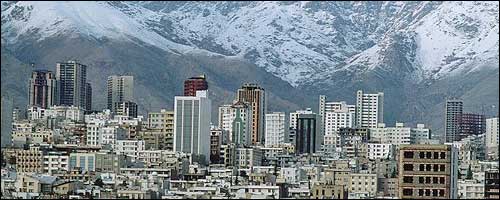
After you enjoy a great buffet breakfast and leave the hotel, you and the guide can decide how you want to spend your time in Tehran.
There are many museums and places of interest, but obviously, you will have to pick and choose which are of the most interest to you. You won’t come close to seeing them all. Tehran is a huge city, with a population of around 12 million people.
The Alborz Mountains, snow-capped most of the year, rise just outside the city to the north. Traffic in Tehran is heavy and chaotic.

The foothills of the Alborz have a number of beautiful restaurants and you might want to tour that area late in the day and have dinner there. There is also a cable car that you can take most of the year, offering some very scenic views.
Among the sites that should be visited in Tehran are the Golestan Palace, a UNESCO World Heritage site, a complex of 17 palaces built during the Qajar Dynasty in the 18th and 19th Centuries.
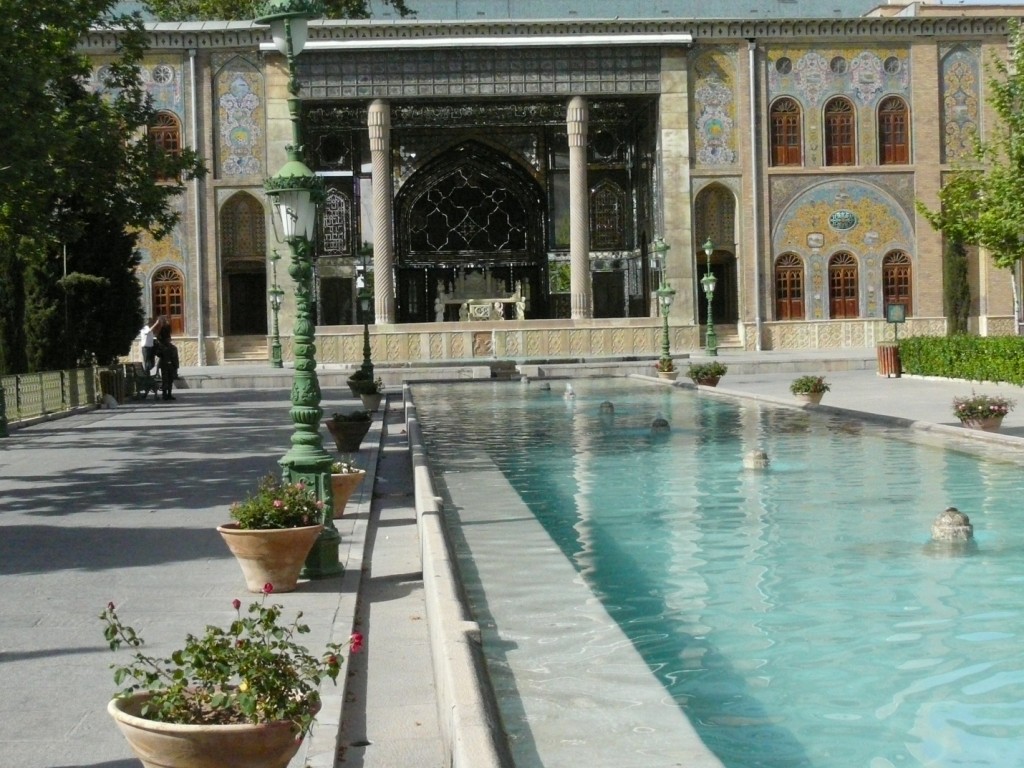
Among the museums that can be visited in Tehran are:
The Archaeological Museum: A must-see in Tehran. Collection includes: pottery, ceramics, stone figures and carvings from 5th & 4th millennium BC. Four tablets inscribed in cuneiform, Darius I inscription, carved staircase, tiles from Apadana Palace, and salt man are some of the highlights.
The Carpet Museum: Founded in 1976, exhibits a variety of Persian carpets from all over Iran, dating from the 18th century to present.
The National Jewels Museum: The treasury of Iranian national royal jewels accommodates the world’s most precious jewelry collection. The treasury has an interesting history, going back centuries.
The Glassware and Ceramic Museum (Abgineh): The premises have been turned into a museum where glass and clay works are on display and were built about 90 years ago. The building is a combination of the traditional Iranian style and the European architecture of the 19th century.
The collection of glass and clay works that are on display at the museum is among the rarest in Iran and it includes clay pots dating back the 4th millennium BC up to the present time as well as glass works from the 1st millennium BC up to the contemporary era. European glass works from the 18th and 19th centuries are also part of the collection.
You might also decide to visit a large student art center, where art students exhibit their work and you might have the opportunity of meeting some of them.
Again, you will not come close to seeing all of these places in the time set aside for you to be in Tehran. You will have to pick and choose. Or, since these are custom-made tours, you can elect to spend more time in Tehran at the beginning or at the end of your tour.

Overnight at 5-star Espinas Hotel.
Day 3
By Rail to Qaem Shahr
This is the beginning of your Iranian rail adventure and it promises to be a very exciting trip.
 You will need to get up early to arrive at the Tehran railroad station in time for your train to Qaem Shahr, across the high Alborz mountains. Your train will climb into the mountains and through the high Firoozkooh Pass, which is linked to the plains by a series of bridges and tunnels.
You will need to get up early to arrive at the Tehran railroad station in time for your train to Qaem Shahr, across the high Alborz mountains. Your train will climb into the mountains and through the high Firoozkooh Pass, which is linked to the plains by a series of bridges and tunnels.
Upon arrival in the afternoon drive a short distance to Sari, the regional capital, where you will spend the night. At this point you will be close to the border with Turkmenistan.
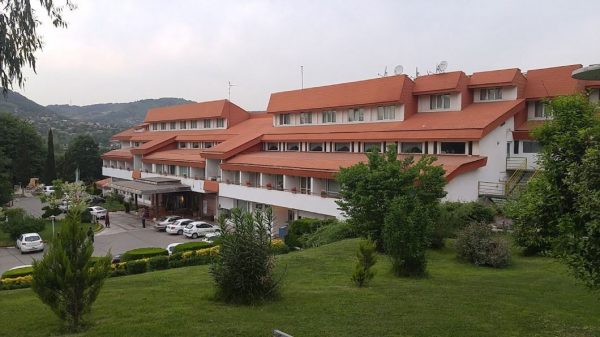 Overnight at the 4-star Salar Dareh Hotel, the best in town.
Overnight at the 4-star Salar Dareh Hotel, the best in town.
Day 4
Sari-Rasht-Anzali-Astara by Road
Today will be devoted to driving along the coast of the Caspian Sea all the way to Astara on the border with Azerbaijan. Just to the south are the high peaks of the northern slopes of the Alborz Mountains.

If the weather is clear you should get some nice views. This will be a long day but we will do our best to break it up for you and make some interesting stops along the way. One stop will be at the Anzali Lagoon, a good place for bird watching.
 Overnight at Espinas Hotel in Astara, a very nice hotel.
Overnight at Espinas Hotel in Astara, a very nice hotel.
Day 5
Astara – Ardabil – Tabriz by Road

On the way to Tabriz you will stop at the UNESCO World Heritage site of Ardabil. You are now in the Azerbaijani part of Iran, where the language spoken is close to Turkish.
Here is the way this site was described on the UNESCO website:
“Sheikh Safi al-Din Khānegāh and Shrine Ensemble was built as a small microcosmic city with bazaars, public baths, squares, religious buildings, houses, and offices.
It was the largest and most complete khānegāh and the most prominent Sufi shrine since it also hosts the tomb of the founder of the Safavid Dynasty.
For these reasons, it has evolved into a display of sacred works of art and architecture from the 14th to the 18th century and a centre of Sufi religious pilgrimage. ”
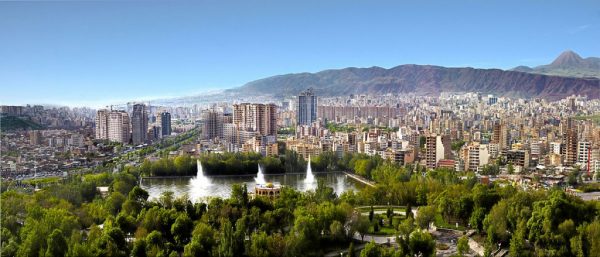
From there drive a little farther to the city of Tabriz.
Overnight at the Shahriar Hotel in Tabriz, a very nice modern hotel.
Day 6
Tabriz – Tehran by Rail
The train to Tehran leaves in the evening, so you have all day to see as much as possible in and around Tabriz.

The Tabriz Historical Bazaar Complex is a UNESCO World Heritage site and is considered a living monument. The Bazaar is still functioning much as it did in the 18th Century and is a prime example of a classic Persian bazaar.
Another place to see during your day in Tabriz is the village of Kandovan, where you can visit manmade cliff dwellings which are still inhabited.
They are similar to the more famous cave dwellings in Cappadocia, Turkey, but are much more rarely visited and perhaps more authentic in that they some are still lived in today.
In the evening it will be time to head for the railroad station for the overnight trip to Tehran in your private compartment.
Day 7
Tehran – Abyaneh – Kashan by Road
Upon arrival in Tehran you’ll drive south to the ancient town of Abyaneh – The Red Village, 160 km away.
 One of the interesting things here is seeing how the women dress. Abyunaki women typically wear a white long scarf covering the shoulders and upper trunk which has a colorful pattern and an under-knee skirt.
One of the interesting things here is seeing how the women dress. Abyunaki women typically wear a white long scarf covering the shoulders and upper trunk which has a colorful pattern and an under-knee skirt.

The Abyunaki people have persistently maintained this traditional costume despite pressures from time to time by the government trying to change it.
Abyaneh is one of the oldest towns in Iran, attracting numerous Iranian and foreign tourists year-round, especially during traditional feasts and ceremonies.
After leaving Abyaneh, it’s another 80 km to Kashan.
….
 is a city famous for its carpets. (see our Q&A about buying carpets).
is a city famous for its carpets. (see our Q&A about buying carpets).
There are a number of things to see here, including the bazaar, which is a particularly interesting one.
 There are also several restored 18th -Century houses (like the one above) which you can visit.
There are also several restored 18th -Century houses (like the one above) which you can visit.
Fin garden
You can have a walk in the Fin Garden, which is a historical Persian garden. containing Kashan’s Fin Bath, where Amir Kabir, the Qajar chancellor, was murdered by an assassin sent by King Nasereddin Shah in 1852. Completed in 1590, the Fin Garden is the oldest extant garden in Iran.
Overnight in Kashan at a beautiful local hotel, the Saraye Ameriha, which is built in what was once a historic mansion.
Day 8
Kashan – Yazd by Rail
In the morning there will be time to continue your tour of Kashan. Then head to the train station for the 2 PM train to Yazd, arriving around 5 hours later.

Hotel Dad
Overnight in Yazd, either at the Moshir Hotel or Hotel Dad.
Day 9
Yazd
Tour Yazd
The ancient city of Yazd is also a UNESCO World Heritage site. It is one of the oldest continually inhabited cities in the world and is like a living museum.

Yazd was a Zoroastrian center and you will visit the Towers of Silence, where the Zoroastrians would burn the dead. This practice was banned by the last Shah, who saw it as an affront to modernity.

Yazd is also famous for its many badgir (wind towers), a form of ancient air conditioning that kept houses cool in one of the hottest places in Iran. You can see hundreds of these exotic structures and also visit one of the largest of them.
Yazd is a very hot place, especially in the summer months. The construction of the badgir draws out the hot air and brings in cooler air. An ingenious system that was also used to keep ice from the mountains cool in the hottest summers.

There will also be a visit to the Zurkhane (house of strength) where every evening men of all ages practice ancient martial arts, twirling 20 kilo (44 pound) clubs.
These practice sessions, accompanied by loud music, are open to the public.
Overnight Yazd
Day 10
Yazd — Na’in — Isfahan by Road
After breakfast, set out for Na’in (155 km) en route to Isfahan. Na’in is an ancient town in the desert and a good place to break up the trip.

In Na’in stop to see the Jame Mosque, one of the oldest in Iran, dating back to the 9th Century.
Then continue on to lsfahan, another 145 km along the desert road. Approaching Isfahan the road starts to climb and the scenery becomes more interesting.

For many tourists, Isfahan is the high point of the trip. It can be called the tourist center of Iran and you are likely to run into many foreign groups there. After arriving in Isfahan and checking into your hotel, it will be time to start seeing some of the many sights of the city.

Isfahan is justly famous for its 11 Bridges spanning the Zayandeh River (although the presence of water in the river is seasonal).
These bridges are beautiful architectural feats, each one being distinctive and impressive in its own right. You will be able to visit several of these unique bridges and walk across some of them.

Overnight Isfahan at the 5-star hotel Abbasi Hotel, built on the site of a former royal caravnserai.
Day 11
Tour Isfahan
Isfahan boasts two UNESCO World Heritage sites. You may have already seen photos of the Meidan Emam. Built by Shah Abbas l the Great at the beginning of the 17th century, and bordered on all sides by monumental buildings linked by a series of two-story arcades.

The site is known for the Royal Mosque, the Mosque of Sheykh Lotfollah, the magnificent Portico of Qaysariyyeh and the 1Sth-century Timurid palace.
They are an impressive testimony to the level of social and cultural life in Persia during the Safavid era.
There will be plenty of time to walk around the square, visit some of the adjoining buildings and the great mosque and to explore the nearby bazaar. The bazaar itself is huge and you may well find some things to purchase, even carpets.
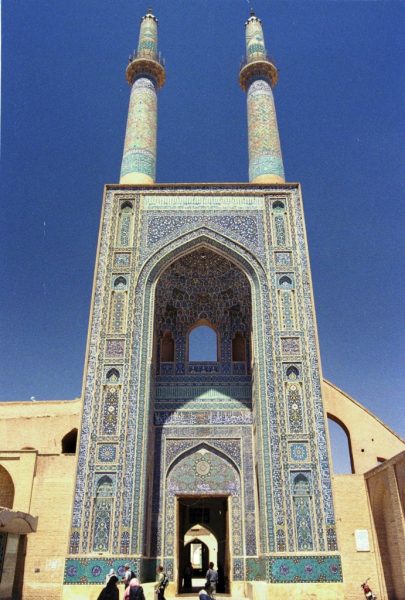
The second UNESCO Site is the Jameh Mosque. Located in the historic centre of Isfahan, the Masjed-e Jameh (‘Friday mosque’) can be seen as a stunning illustration of the evolution of mosque architecture over twelve centuries, starting in AD 841.

It is the oldest preserved edifice of its type in Iran and a prototype for later mosque designs throughout Central Asia.
The complex, covering more than 20,000 square meters, is also the first Islamic building that adapted the four courtyard layout of Sassanid palaces to Islamic religious architecture. Its double-shelled ribbed domes represent an architectural innovation that inspired builders throughout the region.
The site also features remarkable decorative details representative of stylistic developments over more than a thousand years of Islamic art.
Steve with clericsIt may even be possible for you to meet with some Muslim clerics who speak English and are interested in discussions with Americans. You may not always agree with what they have to say, but it is guaranteed to be an interesting discussion.
Another highlight in Isfahan is the Vank Cathedral, established by Armenian immigrants after the Ottoman War of 1603–1605.

The church has beautifully detailed wall paintings which retell Biblical stories. You can also visit an Armenian museum at the site.
The neighborhood around the Vank Cathedral has become somewhat “trendy” and is an interesting area to walk around and have dinner.
Overnight at Abbasi Hotel
Day 12
Isfahan – Pasargadae – Persepolis – Shiraz by Road
On the road route between Isfahan and Shiraz you will stop to see some of the most famous ancient sites of Iran. As you approach the city of Shiraz from the north, the first stop will be Pasargadae.

Pasargadae was the first dynastic capital of the Achaemenid Empire, founded by Cyrus II the Great in the 6th century BC.
Its palaces, gardens and the mausoleum of Cyrus are outstanding examples of the first phase of royal Achaemenid art and architecture and exceptional testimonies of Persian civilization.

Particularly noteworthy vestiges include: the Mausoleum of Cyrus II; Tall-e Takht, a fortified terrace; and a royal ensemble of gatehouse, audience hall, residential palace and tomb.
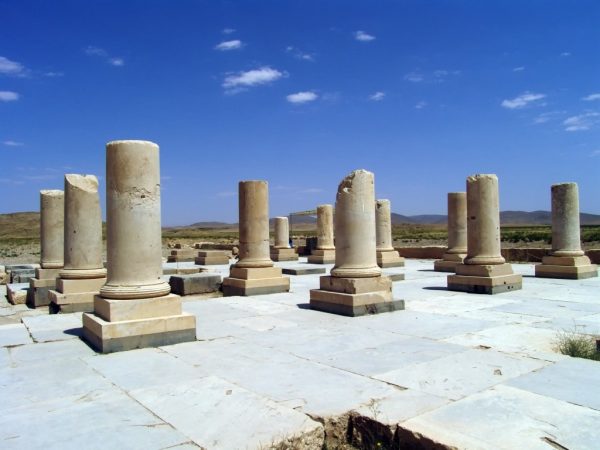
Pasargadae was the capital of the first great multicultural empire in Western Asia.
Spanning the Eastern Mediterranean and Egypt to the Hindus River, it is considered to be the first empire that respected the cultural diversity of its different peoples. This was reflected in Achaemenid architecture, a synthetic representation of different cultures.
Persepolis
Continuing south towards Shiraz the next stop is Persepolis. Persepolis is probably the most famous single historical site in Iran and a UNESCO World Heritage site as well.
 When it was founded by Darius III in 518 BC, Persepolis was the capital of the Achaemenid Empire, where the king of kings created an impressive palace complex inspired by Mesopotamian models. The importance and quality of the monumental ruins make it a unique archaeological site.
When it was founded by Darius III in 518 BC, Persepolis was the capital of the Achaemenid Empire, where the king of kings created an impressive palace complex inspired by Mesopotamian models. The importance and quality of the monumental ruins make it a unique archaeological site.

Persepolis was the example par excellence of the dynastic city, the symbol of the Achaemenid dynasty, which is why it was burned by the Greeks of Alexander the Great in 330.
According to Plutarch, they carried away its treasures on 20,000 mules and 5,000 camels. What remains today, dominating the city, is the immense stone terrace (530 m by 330 m), half natural, half artificial, backed against the mountains.

As in Mesopotamia, the principal building material was sun-dried brick; much of which, has happily survived the vicissitudes of time.
If time allows (if you have gotten up early and made an early start) you can visit one more ancient site.
Naghsh-e-Rostam
This is one of our favorite sites in Iran. You will see four tombs belonging to Achaemenid kings carved out of the rock face at a considerable height above the ground. They are somewhat reminiscent of Petra in Jordan, but much, much easier to get to.

The tombs are known locally as the ‘Persian crosses,’ after the shape of the facades of the tombs. In addition, there are seven over-life-sized rock reliefs at the site, depicting monarchs of the Sassanid period. It is believed that they were created to celebrate a great victory of ancient times.
Overnight in Shiraz at the luxurious Grand Hotel Shiraz, built into the side of a cliff.
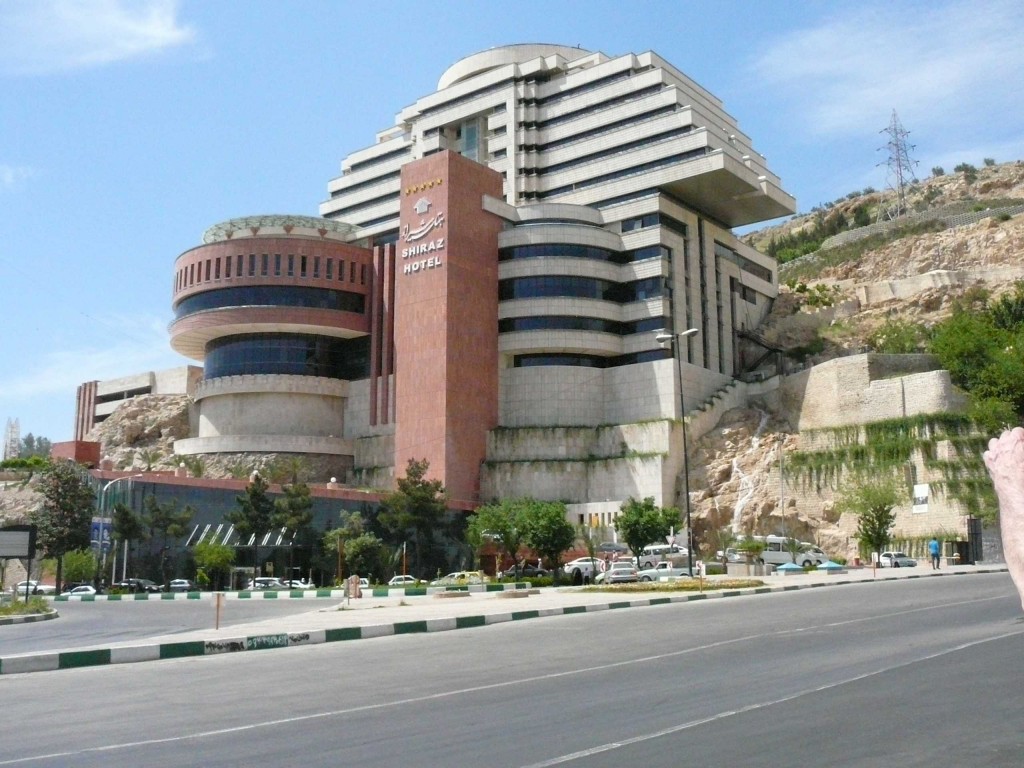
Day 13
Shiraz – Tehran by Overnight Train
The number of places you visit will depend on how early a start you make. Among the places to see are the Karim Khan complex, resembling a medieval fortress; the mausoleum of the 8th-century poet Hatez and the main bazaar.
You will also have the opportunity to visit Eram Gardens.
 Established in the 11th century, the Eram Garden is a series of historic Persian gardens and as a whole, have been designated a UNESCO World Heritage site.
Established in the 11th century, the Eram Garden is a series of historic Persian gardens and as a whole, have been designated a UNESCO World Heritage site.
In the evening transfer to the railroad station and board the night train for Tehran, around 600 miles to the north.
Upon arrival in Tehran transfer back to the Espinas Hotel.
Your vehicle and guide will be available to take you anywhere you want to go in Tehran – the bazaar for shopping, some more museums or a local fashion designer, for example. Or you may decide to just take it easy and relax at the hotel. There is a nice pool available.
Overnight at Espinas Hotel.
Day 14
Departure
The schedule for this day depends on when your flight departs. Most flights leave either late at night or in the early morning. We will make sure you get to the airport in plenty of time.
….
Leave Any Time – All Train Tours Are Private
Interested? Call us today at 1-919-726-2044 or contact us here for a free travel Q&A session

